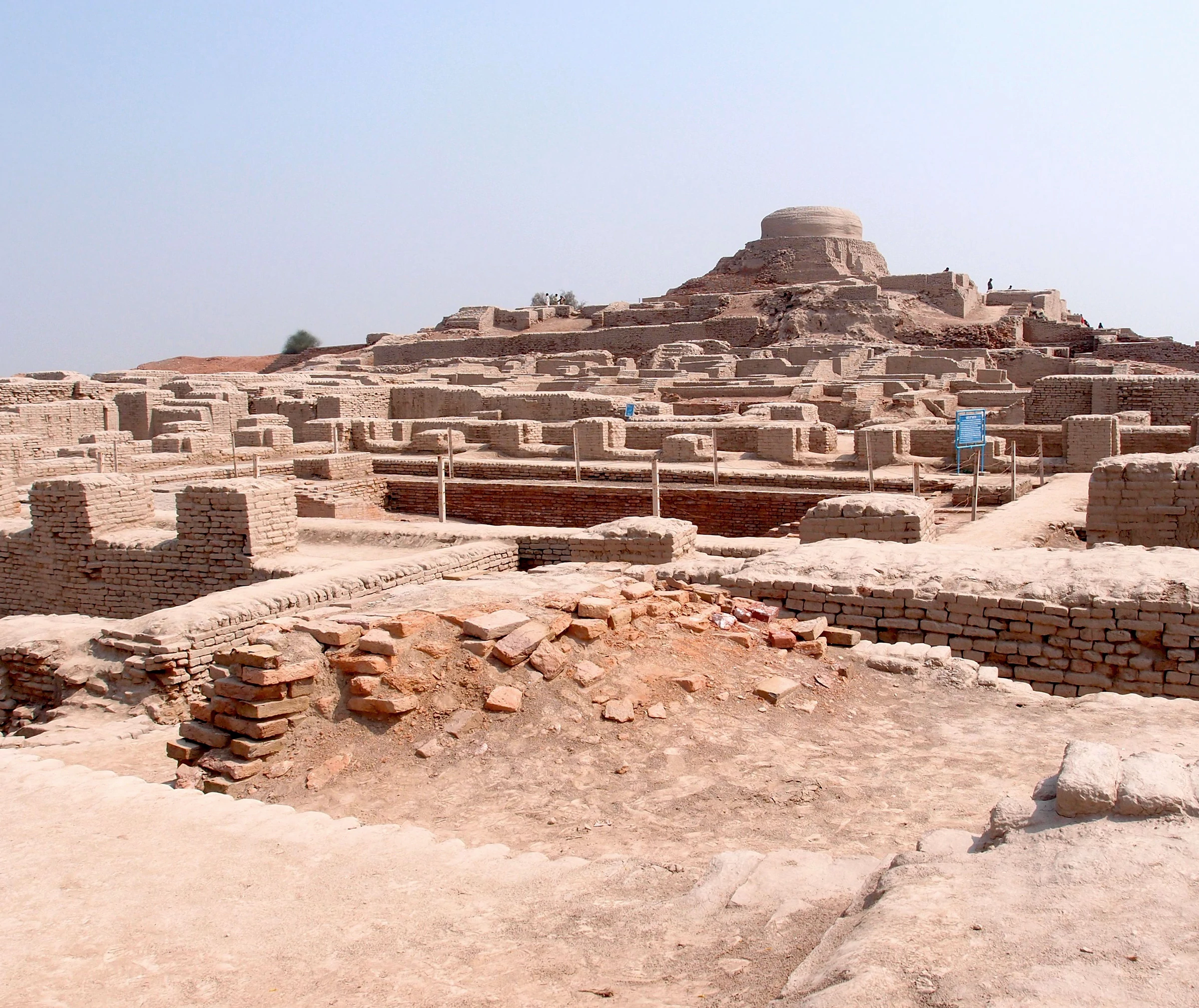Indus Valley Civilization
No pyramids, but great plumbing


In 3000 BCE it was good to live near water. As bronze-age cultures settled in ever-expanding urban populations, fertile river valleys were the perfect place to raise crops, graze livestock and trade with neighbors. The Nile valley birthed Ancient Egypt, the Tigris and Euphrates rivers fed the Mesopotamian cultures—and to the east, in what is now India and Pakistan, the massive Indus river system became home to a sprawling civilization that perfected complex architecture, urban planning and sophisticated arts and crafts.
The Indus Valley Civilization as it is known today emerged from a semi-nomadic culture that settled at sites like Mehrgarh, in Pakistan’s Balochistan province. The region’s rich soil was converted to farmland to raise wheat and barley and graze herd animals like sheep and goats. Named after its most clear archeological example, the Harappa site, the Indus Valley Civilisation is described in three periods, Early Harappan, Mature Harappan and Late Harappan.
In the Early Harappan period, from 3300 BCE until 2800 BCE, the Indus valley was increasingly settled and farmed, with peas, sesame seeds, dates, and cotton added to the grain crops that came before. Trade routes developed between growing population centers, and prosperity led to crafts like lapis lazuli beadwork. Early versions of the mysterious Indus script began to appear.
The Mature Harappan period is marked by the development of sophisticated cities with careful urban planning, and an efficient sanitation system where home wells directed waste water into municipal drains. Cities built impressive dockyards, granaries and warehouses, but aside from walls designed to protect from flood water, power structures were absent. Archeologists haven't found any structures that are identifiable as palaces, temples or military fortifications. During this time the arts flourished. Red pottery with black painting, bronze vessels and sculpture, gold jewelry and even six-sided dice were found in excavations. Life was good for the Indus valley peoples.
Until the Late Harappan period at least. After absolutely thriving for 1000 years, around 1900 BCE signs of cultural decline creep into the archeological record. Skeletons carry the marks of increased interpersonal violence and diseases like leprosy and tuberculosis. Artifacts emblazoned with Indus script become rare and low quality and urban centers are slowly abandoned. There are many theories to the decline of the Indus Valley Civilization, but their fall was likely caused by a bit of everything. Climate change reduced farm productivity, evidence of major earthquakes, and the often natural shift of cultural priorities over time, leading to migration and ruralization.
...
Got questions, comments or corrections about Indus Valley Civilization? Join the conversation in our Discord, and if you enjoy content like this, consider becoming a member for exclusive essays, downloadables, and discounts in the Obelisk Store.